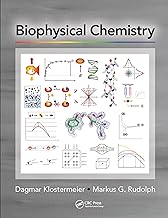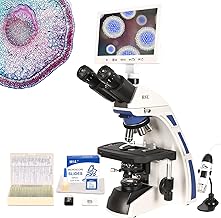Summary of "Biophysical Chemistry 2018 - Lecture 1"
Summary of Biophysical Chemistry 2018 - Lecture 1
Main Ideas and Concepts
1. Course Introduction and Structure
- Instructor: Eric Lien Årnes, Professor of Biophysics at SCI Life Lab.
- The course alternates between chemistry and physics topics, progressively layering concepts.
- Emphasis on understanding basic chemistry and physics principles to interpret protein structure and function.
- Central dogma highlighted: Sequence → Structure → Function.
- Aim: Understand how amino acid sequences determine protein structure, which in turn determines function.
2. Amino Acids: Building Blocks of Proteins
- Amino acids are small molecules with a central alpha carbon, amino group, carboxyl group, hydrogen, and a variable R group.
- They are zwitterionic (carry both positive and negative charges).
- All amino acids (except glycine) are chiral; only L-amino acids are genetically encoded.
- Chirality is fundamental to biological function and drug design.
- Amino acids classified by size, polarity, charge, and special properties (e.g., cysteine, proline, glycine).
- Importance of understanding amino acid properties rather than memorizing structures.
3. Genetic Code and Protein Synthesis
- Genetic code redundancy: 64 codons encode 20 amino acids plus stop signals.
- Codon frequency influences amino acid abundance.
- Peptide bonds form via polymerization, creating heteropolymers (proteins made of different amino acids).
- Frederick Sanger’s sequencing of insulin established the concept of unique protein sequences.
4. Protein Structure and Folding
- Proteins range from small (~100 residues) to very large (e.g., titin with 30,000 residues).
- Proteins fold into unique 3D structures, stabilized by peptide bonds, hydrogen bonds, and other interactions.
- Secondary structures:
- Alpha helices: stabilized by hydrogen bonds every 4 residues.
- Beta sheets: formed by hydrogen bonds between strands; can be parallel or antiparallel.
- Folding driven by physics and free energy minimization.
- Levinthal paradox: despite astronomical possible conformations, proteins fold rapidly, implying guided folding pathways.
5. Experimental Techniques in Structural Biology
- X-ray crystallography:
- Traditional method to determine atomic structures of proteins.
- Requires protein crystals; challenging for membrane proteins.
- Data interpreted via Fourier transforms and modeling.
- Cryo-electron microscopy (cryo-EM):
- Recent breakthrough allowing structure determination without crystallization.
- Resolution improved dramatically, enabling visualization of side chains.
- Revolutionized membrane protein structural biology.
- Examples of Nobel Prize-winning work in protein and nucleic acid structure determination.
6. Physical Chemistry of Proteins
- Importance of torsion (dihedral) angles Phi (φ) and Psi (ψ) in protein backbone conformation.
- Ramachandran plots map allowed torsion angle regions; glycine and proline have distinct conformational preferences.
- Protein folding and structure driven by interplay of:
- Steric constraints (atom clashes)
- Hydrogen bonding
- Electrostatics (partial charges and dipoles)
- Van der Waals forces
- Alpha helices have a macrodipole due to aligned peptide bonds.
- Electrostatic interactions are strong and long-range, crucial for protein stability and function.
7. Biological Relevance of Structure
- Protein function depends on precise structure; mutations can disrupt function and cause disease.
- Ion channels as an example: selectivity for potassium over sodium explained by physical chemistry principles (hydration shells, electrostatics).
- Protein folding and stability linked to thermodynamics and free energy landscapes.
8. Outlook and Course Logistics
- Future lectures will delve deeper into physics (free energy, Boltzmann distributions).
- Emphasis on integrating physics and chemistry to understand biological function.
- Encouragement to read classical papers to understand the scientific discovery process.
- Study visits and practical sessions planned.
- Importance of active participation and asking questions.
Detailed Methodologies and Instructional Points
Classification of Amino Acids
- By size: small vs. large
- By polarity: hydrophobic vs. polar
- By charge: charged vs. neutral
- Special cases: cysteine, proline, glycine
- Chirality considerations: only L-amino acids encoded
Protein Folding Considerations
- Understand peptide bond rigidity (partial double bond character).
- Use torsion angles φ and ψ to describe backbone conformation.
- Use Ramachandran plots to identify allowed conformations.
- Recognize alpha helices and beta sheets as common secondary structures.
- Appreciate the Levinthal paradox and its implications for folding pathways.
Category
Educational


